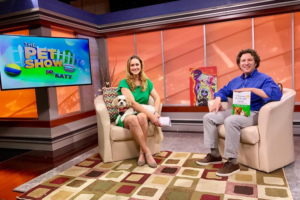Obesity is a medical condition that most commonly results from a combination of overeating and under exercising (other causes include hypothyroidism and neutering). Put simply, an obese pet is an overweight animal whose body fat has become excessive. Just like in humans, the health risks of obesity are tremendous, and they only increase as a pet’s obesity progresses and lingers. Older animals are especially vulnerable to the harmful effects of this disease. It is not uncommon for obesity to result in significantly decreased lifespans and a plethora of significant medical problems. In obese dogs the major health concern is the development of arthritis as the bones and joints struggle to support excess body weight. Both dogs and cats will be more prone to inflammation when overweight, and this can lead to many global health issues. In cats, there is also the danger that they will develop Type 2 Diabetes as their body mass overwhelms the pancreas’ ability to produce insulin. Managing a diabetic cat is a pet owner’s nightmare, especially when you consider that the condition is totally preventable!
So, what can you do to prevent obesity in your own pet?
The first step is awareness. It is an unfortunate truth that our cultural standards for healthy looking dogs are skewed towards heaviness, and this has normalized what should be an instant visual alarm for pet owners to begin changing their pet’s lifestyle. I have heard many anecdotes from parents with perfectly fit dogs recounting how they were berated on dog-walks by strangers who thought their dog was significantly malnourished. What this means, unfortunately, is that many pet owners who would hate to have an overweight dog don’t even notice it.
Ultimately, your veterinarian is going to be the best authority on whether or not your pet is overweight. However, another excellent set of tools at your disposal are body weight index charts. These rate animals on a scale from 1 to 9, with 1 being completely emaciated and 9 being severely obese. For dogs you want to aim to be in the 4-5 range; with cats, 5 is ideal. Anything 7 or above is considered obese in both cats and dogs.
http://humanealliance.org/elearning/Body_Condition_Scale.pdf
(My forthcoming book on nutrition will also contain detailed body index charts for easy reference)
Another great resource for dog owners who want to eyeball their pet’s weight is to look up pictures of healthy dogs in your dog’s breed (this is obviously not an option is you have a very mixed mutt). Lately, show dogs have even been skewing heavy, so we recommend searching first for pictures of active work dogs to get a sense of what proper weight looks like on your breed of pet. If your dog isn’t a working breed, then show dogs may be your next best option.
Obesity’s Cause: Overeating and Under-exercising
Although there can be aberrant and unusual causes of obesity in pets, the most common source is a combination of too much food and too little exercise. In terms of exercise, animals with low caloric expenditure during the day—such as indoor-only cats—will only need a very limited amount of calories per day to stay healthy. However, being under-stimulated can be a problem of its own for indoor animals, and we recommend investing in toys that will stimulate them and get them to run around the house. One such option is treat dispensing toys. These are built so that your cat will have to work and burn calories for each treat it wants to eat.
Obesity’s Nemesis: Proper Nutrition!
Many dogs and cats naturally develop a “live to eat” mentality rather than an “eat to live” mentality. What this means is that you have to control the amount of food that you are feeding your pet. Left to their own devices, many pets will eat far more calories than is healthy for them in a day. The importance of the parents’ role here cannot be overstated, and that is why I’ve written an entire book that offers guidance to parents trying to answer the beguiling question, “what should I feed my pet?”.
Here are a few basic pointers which I expand upon in the book: how much you should feed your pet is always going to be dictated by their activity level, genetics, and the type or quality of food that you are feeding. Finding the right amount of calories to feed your pet based on all three of these factors is not something to guess at; I would strongly recommend either consulting a veterinarian or using guidelines found within my book to assist you.
Overweight Cat Owners: ALWAYS CONSULT A VET BEFORE CHANGING YOUR CAT’S DIET! If you reduce their weight too quickly you can put them into liver failure. For this reason, you should always have a veterinarian’s guidance when making changes to their diet.
If you are a dog owner and don’t want to wait until your veterinarian can see you, it is perfectly fine to begin a food-reduction regimen on your own. You can start by reducing your dog’s food by 15-20% and then closely monitoring their weight. You’ll want to have a reliable scale so that you are getting accurate weights on your dog.
Some dogs will become very agitated if you suddenly start to give them less food—luckily for you, there’s a simple way to trick them into not noticing. To start, take a slightly reduced amount of their regular food and add raw veggies— like carrots, broccoli, and green beans—to the food. You can add up to twice the volume of the food you took out. This means that they will still be getting the same or more volume of food but without all the calories. Veggies can be cooked or raw—whatever they will eat!
Remember, any serious dietary changes should always take place under the supervision of a veterinarian. Even though tools like the body index chart can be helpful when used at home, the best and most accurate answers always come from a veterinarian. If you suspect that your dog or cat is clinically obese (above a 7 on the index), you should bring them to a veterinarian.
I hope this article has informed you and given you the tools to take action regarding your pet’s weight. For a more complete overview of animal nutrition, please look forward to my book, “The Ultimate Pet Health Guide,” which will be available in August.
Get Access to Dr. Richter's "Top 10 Mistakes Most Pet Parents Are Making"
Imagine feeling confident knowing that you are doing everything you're supposed to be doing to ensure your pet is getting the best possible care. How would that feel to you?
Hear it straight from Dr. Richter himself, America’s favorite veterinarian and #1 best-selling author on Amazon as he tells it all when it comes to ensuring optimum care for your pets. Sign up below to get the inside scoop!
* We will never share your email address with anyone, for any reason, ever.



